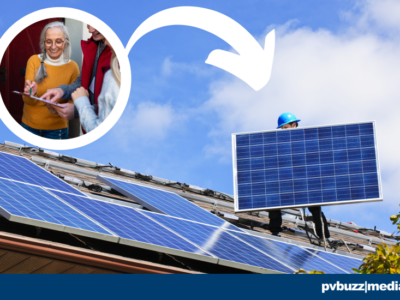- Lithium-ion batteries are one of the most widely used secondary battery systems in the world today.
- However, the current commercial graphite anode can’t meet the increasing demand for energy-intense applications.
- Brett Porter explains why silicon is a better anode in this episode of "Quick Insight".
Lithium-ion batteries are one of the most widely used secondary battery systems in the world today. Compared to other rechargeable batteries, such as nickel-cadmium and nickel-metal hydride batteries, lithium-ion batteries feature higher energy densities, higher operating voltages, limited self-discharging, and lower maintenance requirements.
However, the battery technology has a major flaw. Its current commercial graphite anode can’t meet the increasing demand for energy density, operation reliability and system integration that arises from lengthy portable electronic devices, longer-range electric vehicles, and increasing energy storage applications.
On the other hand, Silicon has been immensely researched as a high-performance alternative to these graphite anodes.
The Structure and Chemistry
Lithium-ion batteries are composed of three main parts: an anode, a cathode, and a lithium salt dissolved in an organic solvent.
The organic solvent provides the medium for lithium-ion transport. lithium-ions move from the anode to the cathode during discharge and are intercalated into, i.e., are inserted into, open spaces in voids found in the cathode.
The lithium-ions make the reverse journey during charging. A lithium-ion battery (or battery pack) is made from one or more individual cells packaged together with their associated protection electronics.
The anode (or negative electrode) in lithium-ion batteries are typically made up of Graphite, coated on Copper Foil. Graphite is a crystalline solid with a black/grey color and a metallic sheen.
The Current Anode
Graphite is commonly used as the active material in negative electrodes mainly because it can reversibly place lithium-ions between its many layers. This reversible electrochemical capability is maintained over several thousands of cycles in batteries with optimized electrodes.
However, one requirement for this application is that the graphite surface must be compatible with lithium-ion battery chemistry (salts, solvents, and binders).
While graphite is the material of choice for most anodes, its performance is a limiting factor in making better batteries and expanding their applications. Graphite anodes exhibit only a moderate intrinsic specific capacity and present serious safety concerns due to lithium plating and further formation of lithium dendrites.
Among all potential lithium-ion battery anodes, silicon is one of the most promising candidates to replace graphite due to the fact that it possesses a high gravimetric capacity and volumetric capacity to lithium metal; it exhibits an appropriate discharge voltage at ca. 0.4 Vin average, which finds a good balance between retaining reasonable open-circuit voltage and avoiding adverse lithium plating process, silicon is abundant, potentially low cost, environment-friendly, and non-toxic.
The Future Anode
Silicon shows promise for building much higher-capacity batteries because it’s abundant and can absorb much more lithium than graphite.
Silicon makes up 27.7% of the Earth’s crust by mass and is the second most abundant element (oxygen is the first). It does not occur uncombined in nature but occurs chiefly as the oxide (silica) and as silicates. The oxide includes sand, quartz, rock crystal, amethyst, agate, flint, and opal. The silicate form includes asbestos, granite, hornblende, feldspar, clay, and mica.
In order to use silicon in lithium-ion anodes, the compound has to be purified and processed into nanoparticles.
High-purity silicon is produced commercially by reducing sand with carbon in an electric furnace. In the electronics industry, it is prepared by the thermal decomposition of ultra-pure trichlorosilane, followed by recrystallization.
These current manufacturing methods for silicon metal nanopowders are expensive, not very scalable and not commercially feasible.
A recently proven Carbothermic process (patent pending) called the PUREVAP™ Quartz Reduction Reactor (QRR) Project has successfully produced transformed and purified quartz into high purity silicon metal (4N+ Si) in one step.
Engineering plans have been finalized that will upgrade HPQ Silicon’s PUREVAP™ QRR into a PUREVAP™ reactor. The reactor would enable the low-cost transformation of melted silicon metal into spherical nanopowders and nanowires.
A New Battery
These spherical silicon metal nano-powders will allow the manufacturing of high-performance lithium-ion batteries using silicon metal anodes needed to deliver on the research promises of an almost tenfold (10x) increase in the specific capacity of the anode, inducing a 20-40% gain in the energy density of lithium-ion batteries.
By simplifying and standardizing the process used to convert silicon into nano-sized particles, the market potential of silicon anode batteries (and the products which could potentially utilize them) could be vastly expanded.
The latest lithium-ion batteries on the market are likely to extend the charge-to-charge life of phones and electric cars by as much as 40 percent. This leap forward, which comes after more than a decade of incremental improvements, is happening because developers have started working towards replacing the battery’s graphite anode with one made from silicon.












Comments